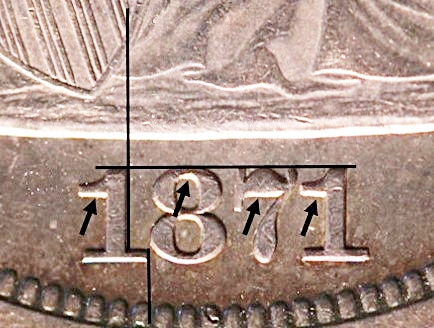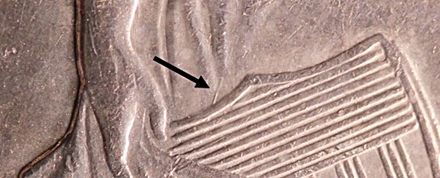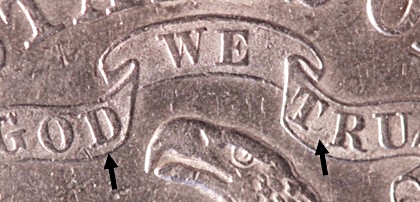|
|
Comments: This is the first of two uses of Obverse 5 and the fifth and final use of Reverse A. |
Obverse 5 The photo below shows the Obverse 5 attribution grid. Obverse 5 also displays minor repunching on the date, visible below the prominent digits. The arrows point to these features.  1871 Obverse 5 attribution grid and date repunching An additional die marker is a die line in the gown above the left side of the upper edge of the shield, shown below.  1871 Obverse 5 die line above shield
|
1871 Reverse A was the workhorse die for the year, paired with 5 different obverse dies. It features two minor but notable die markers that allow easy identification for any coin grading a strong F or better. A small die line curls up to the right off the lower right base of the first T in TRUST. A small lump is attached to the lower edge of the D in GOD. The photo below shows these markers. The die line may not be clearly visible in photos. It depends on the lighting and the condition of the coin being viewed. The lump can almost always be seen, even on very low-grade coins.  1871 Reverse A die markers
|
| Photo credits:
Obverse 5 and Reverse A: 1871 PCGS MS61, from the Osburn-Cushing reference collection. |
